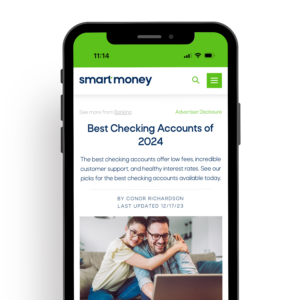Takeaways
- Becoming debt free allows you to spend on things you want instead of paying off debt.
- The debt avalanche method focuses on paying off debts with the highest interest rates first.
- Ignore debt with low balances and focus on reducing debts with high-interest rates first.
- Paying off your debt may take longer than you think, so enjoy the process and reward yourself.
- Select a budgeting strategy that helps you pay off your debt quickly.
What would you do if you were debt free? If you want to get out of debt for good, you have come to the right place. That’s right – no more credit card debt, student loans, car payments, or personal loan payments.
Think about all you could do with the extra free cash. Instead of spending $900 per month paying for your credit card bills, you could save, travel, or invest. If you want to be debt free, choose a debt repayment strategy that works for you. Here we are going to talk about one of the most used debt reduction strategies: the debt avalanche method.
What is the Debt Avalanche Method?
The debt avalanche method is a debt reduction strategy that focuses on paying off debt based on interest rates. The idea is to pay off debt with the highest interest rate first. After the debt with the highest interest rate is paid, you progress to your debt with the second highest interest rate until you have paid off all your debts. The avalanche method ignores your debt balances and focuses solely on the cost of borrowing.
If you are incredibly analytical and like to use Excel, the avalanche method could be your debt repayment strategy of choice. The avalanche method usually appeals to people who are motivated by numbers. Mathematically, the avalanche method is the best debt repayment strategy for eliminating your debt.
Learn More -> What is a Credit Score?
However, as you know, personal finance decisions are not always based on numbers. There is a heavy dose of irrational human behavior, financial habits, and emotions that factor into the “best” strategy. The debt snowball method offers a counter approach focused on paying off small debt balances first, capturing your emotions to succeed.
In contrast to the debt avalanche method, the debt snowball method prioritizes paying off your debts with the smallest balance first and ignores interest rates. After your smallest balance is paid, you move on to the next smallest debt and gradually work up your debt ladder to pay off the largest balance. While you do this, you are rolling your monthly minimums into the next debt payment, creating a wave of momentum.
What About Credit Balances?
The key differentiator of the debt avalanche method is that it ignores how much debt you have. The avalanche method wants you to plug your debts into a spreadsheet and stare boldly into the reality that your debt with the highest interest is eroding your finances. High-interest rate debt costs you more money on a per-dollar basis than your other levels of debt. That is why the avalanche method wants you to ignore your debt balances.
If you have a personal loan with a 30% interest rate, you should be focused on reducing that debt. Don’t worry about the credit card bill with a 23% interest. You will get to that eventually.
Learn More -> How to Pay off Debt Using the Snowball Method
Some personal finance experts argue that instead of focusing on interest rates you should concentrate on paying off debt with the lowest balance first. Look, if you have high debt balances with high interest rates, it might take years to finally pay off that debt with the avalanche method. However, the debt snowball method wants you to get a taste of what it feels like to pay off debt quickly, which is why it advocates for you to pay off small balances first. See what a win feels like first. Then, once you taste it you will be more inclined to go tackle the next debt. At least that is the theory.
Get Smart With Your Money
Fresh weekly articles delivered straight to your inbox.
Enter your name and email for free tips and tricks.

How the Debt Avalanche Method Works
The debt avalanche method targets debt with the highest interest rates first, no matter the balance.
List Your Debts
The first step in the avalanche debt repayment method is to get a handle on all your outstanding debts. Create a list of everything, including credit cards, student loans, personal loans, car notes, and payday loans. After you have collected all your debts, then create a spreadsheet of their current balances, interest rates, and minimum payments.
Smart Tip:
Don’t know your interest rate? Sign in to your online portal or read your original loan documentation to find the Annual Percentage Rate (APR). If you don’t know how much debt you have outstanding, review your credit score and credit report to ensure you have fully captured the universe of your outstanding debt.
Sort Debt by Ascending Interest Rate
Now it is time to build your avalanche. Take your spreadsheet and reorder your debts in descending order-based on interest rates. This means listing your debts with the highest interest rates first.
Let’s look at an example. Below is an illustrative example of the debt avalanche method table in descending order:
| Debt Description | Interest Rate | Current Balance | Minimum Payment |
|---|---|---|---|
| Credit Card #2 | 24.00% | $1,400 | $20 |
| Credit Card #3 | 23.00% | $2,000 | $33 |
| Credit Card #1 | 15.00% | $300 | $11 |
| Student Loan #2 | 8.00% | $15,000 | $70 |
| Student Loan #1 | 7.25% | $10,000 | $50 |
| Car Note | 7.00% | $40,000 | $560 |
Above is an illustrative example. APY is not included in the minimum payment calculation.
In this example, you want to start paying off Credit Card #2 with the 24% interest rate. While you are paying off this balance you want to make sure that you keep paying your other debt’s minimum payment balances to keep those debts in check. Once you have paid off Credit Card #2, continue knocking off debts. In this case, that means moving on to Credit Card #3.
Learn More -> Understand Your FICO Score
Select a Budgeting Strategy
To succeed with any successful debt repayment plan, you need a strong budgeting strategy. A budget will help you keep track of your income and prioritize your expenses. If you are spending more than you make, you will need to adjust your spending or increase your income.
High credit card bills, student loans, or car payments can erode your ability to repay your debts, trapping you in a cycle of debt. To get out of your debts, you need to eliminate your debts one at a time.
Here are some budgeting strategies that can be used to help you become debt-free:
- 50/30/20 Budget: If you need help allocating how much to spend in certain categories of your budget, the 50/30/20 budget can help. This strategy allocates 50% to needs, 30% to personal spending, and 30% to saving and investing. These allocations provide a terrific starting point.
- Zero-Based Budget: The zero-based budget advocates for you assigning a job to every dollar of income. At the end of a zero-based budget, when analyzing your income minus your expenses, the ending balance should be zero. You can combine the 50/30/20 budget with the zero-based budget.
- Cash Envelope Budget: Need to seriously tighten how much you are spending? Then try the cash envelope budget system. This system advocates for you to take your income in cash and stuff envelopes full of cash for each of your spending categories. There is an envelope full of cash for groceries, fun, rent, and utilities. The cash envelope system makes you touch every dollar that you spend. Increasing the pain of the transaction can enlighten you on how much you are spending in certain areas, allowing you to cut unneeded expenses quickly.
Other budgeting strategies work well too. You need to choose a budgeting system that holds you accountable.
Smart Tip:
Feeling overwhelmed with your debt? You are not alone. But if you have been trying to pay off your debt and can’t seem to get out from under it, then it might be time to consider options like debt consolidation or debt relief. These should be last-resort options. Make sure you have tried an appropriate budgeting strategy first.
Reward Yourself
Here’s the deal, paying off your debt will take time. The avalanche method is the more logical route, but to persevere through high credit balances, break up your balances into bite-size pieces. Acknowledge the sacrifices you are going to make along the way and reward yourself for a job well done.
For example, if you have $20,000 in an outstanding student loan you want to pay off, instead of thinking about this as one $20,000 debt, reward yourself for every $5,000 you pay off. Every time you pay off $5,000 of your principal balance, go out to eat, grab drinks with friends, or enjoy a great movie. Try to gamify your repayment process and inject some fun into an otherwise boring process. This will help you win the long game.
Get More -> How to Apply for a Debit Card
Smart Summary
Choosing the right debt-repayment method depends on how you approach money. If you are extremely analytical and focused exclusively on making sure the “numbers” make sense, then the debt avalanche method could be for you. By paying off your debts with the highest interest rates first, you effectively eliminate the highest-cost debt and progress down the scale to your lowest cost of debt. Human psychology is a powerful factor in any personal finance system you implement. As a result, the debt snowball method has also been an extremely powerful debt-repayment strategy. Whether you go with the debt avalanche or snowball method, paying off your debt is a smart money move.
Frequently Asked Questions
In a word: yes. The avalanche method advocates for you to focus on paying off your debt – credit cards, student loans, or personal loans – that have the highest interest rate first. Focus on the logic of paying off your highest cost of debt first and ignore balances for now.
It depends on your financial goals and attitude towards money. Researchers have shown that the debt snowball repayment method is the best method to help you eventually pay off all your debts. For the more analytical mind, this can be a hard pill to swallow because it prioritizes behavioral psychology over pure finance. Choose a method you think will work best for you.
Too much debt in your financial diet can impair your ability to reach savings and investing goals. Personal finance experts typically recommend having a debt-to-income ratio of less than 30%.
Debt consolidation is always an option, but it doesn’t always make the best financial sense. If you haven’t diligently tried the debt snowball method or avalanche method, then you should research the benefits of debt consolidation.










